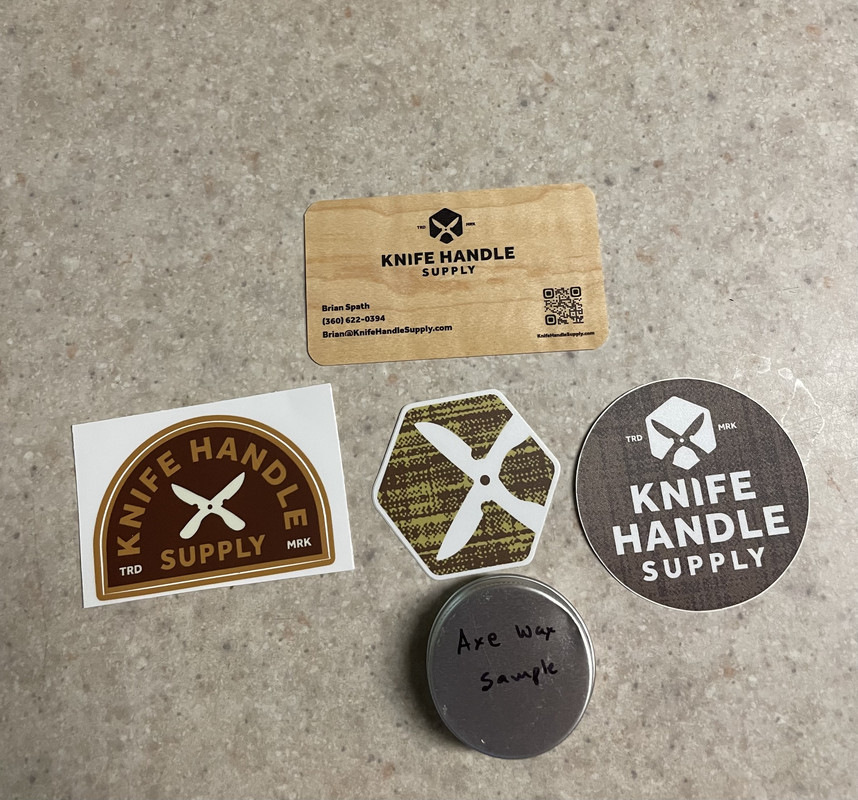Joshua Fisher
Knifemaker / Craftsman / Service Provider
- Joined
- Mar 27, 2018
- Messages
- 1,528
It’s funny I’ve had the same thoughts so far, I’m liking it on handles and seems to work really well for that but on steel I’m not liking the film it leaves that really makes finger prints stand out. Could be I’m not waiting for it to dry long enough but I also don’t want to have to buff a dry wax on a sharpened blade so I’ve been using my normal camellia oil for the blade and testing the wax just on the handle. I’ll post some photos tomorrow of handles finished with it so far.Waiting on a few more addresses, but I got a bunch of the samples shipped out today (OP has been updated to reflect this). If anyone happens to have some Wicked Wax on hand to compare with the Axe Wax, I'd be really curious to hear your thoughts.
A little over a week ago I applied Axe Wax to a few different styles of handles to see how it performed. So far I'm liking the wax on wood. I'm still deciding when it comes to steel. Here are some quick videos (be sure to set it to 4k).
This is on some unstabilized, curly koa that has been sanded to a fairly high grit. The Axe Wax darkened the koa a bit, but really made it pop. The handle has a nice, subtle tack to it now.
Unstabilized walnut with a rough finish. This handle really soaked up the wax. The dry look the wood used to have is gone now.
Milled Dymondwood. I warmed up the handle just a bit extra to make sure the wax would really get into all the nooks and crannies. I also warmed up the handle a tiny bit with a heat gun while the wax was on their so that the wax would really seep into the holes for the nuts/bolts. Since Axe Wax is a hardening wax, I've gotta wonder if that will make removing the handle more difficult.






